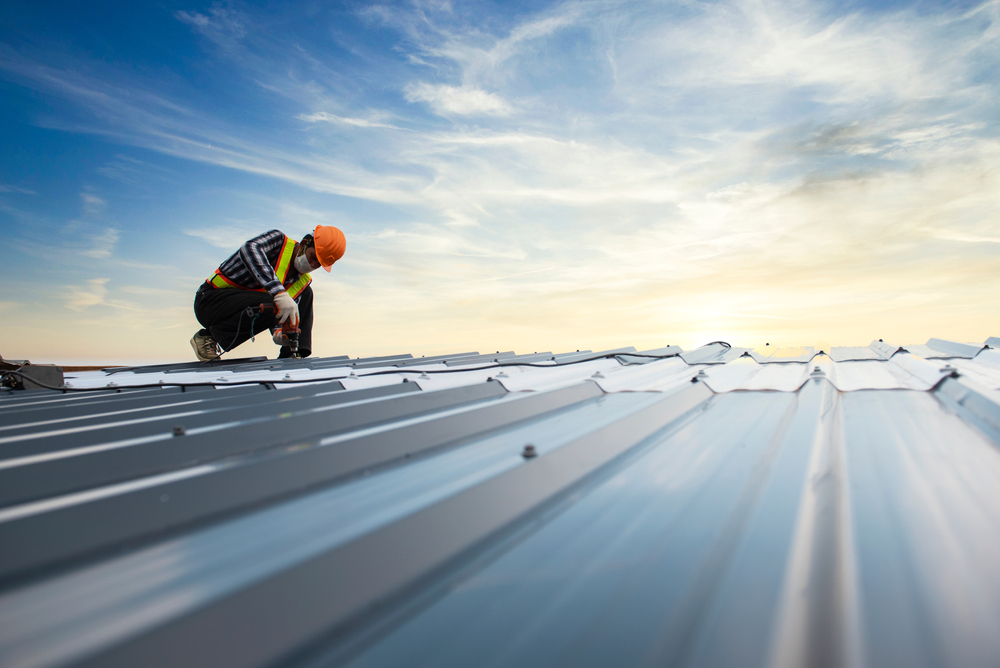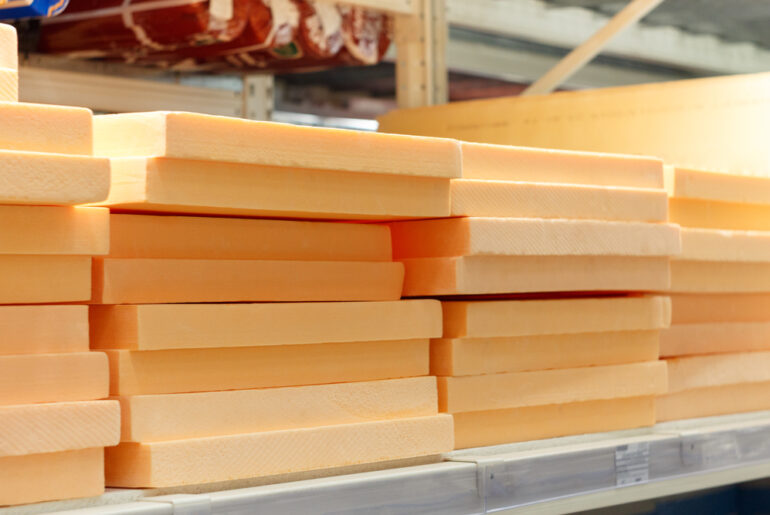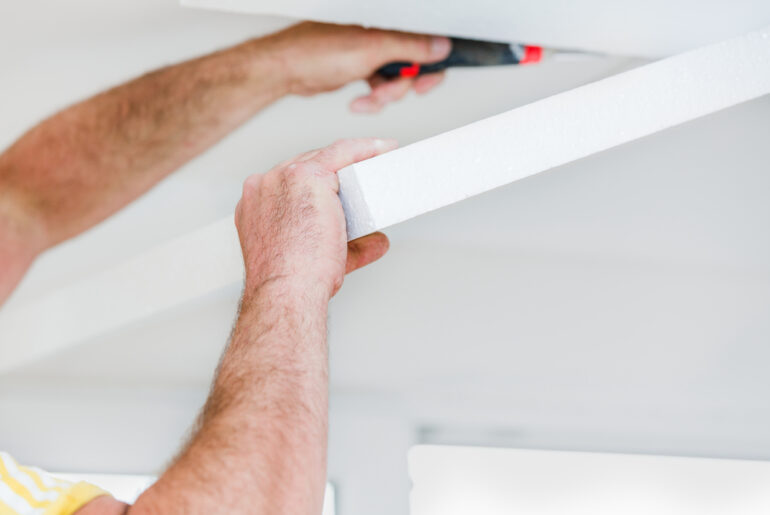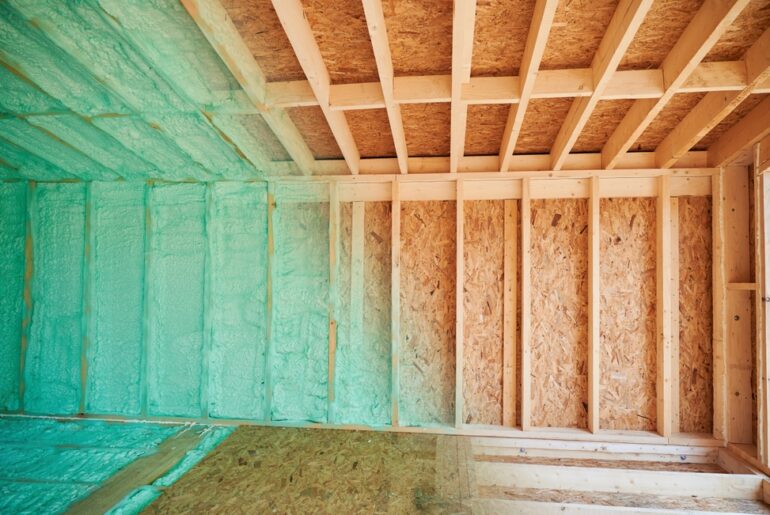You need to insulate the metal roof on your property to make living or working in the building more comfortable year-round, but what is the best way to do it?
Whether you are upgrading an auto-shop, converting a pole-barn, or have a traditional corrugated or flat profile metal roof, there are a number of ways that foam board insulation can be attached to help control the environment within the building.
Foam insulation boards are lightweight, and easy to handle, and you don’t need any specialist tools to cut them either, making foam board insulation a straightforward material to work with.
Here’s how to insulate your metal roof with foam board.
Before You Start
Measure Twice, Cut Once
Get your measurements right! Sounds simple doesn’t it, but unless the depot where you buy your insulation is just around the corner, going to pick up extra boards will cost time and money, and insulating is all about saving energy.
Likewise, if you buy too many boards, it might be difficult to take them back. Very often there is a time limit on returns, so make sure your math is good before you put your order in.
Tools and Equipment
Two-inch foam board insulation is easy to cut with a regular carpenter’s saw. Some folks swear by a specialist foam knife, but this is not essential. Reciprocating saw blades tend to bend, throwing off a straight cut while circular saws create a lot of dust and noise, so the advice is to keep it simple, keep it quiet and keep it accurate.
Use a fine marker pen to mark up your boards. Foil faced polyiso, multicolored Styrofoam, or white polystyrene will make a pencil mark very hard to see, which can be frustrating. When measuring up a board and marking a line mark at least three spots, one on each edge (the start and finish of the cut) and one in the middle, to ensure the line is straight.
There are two main ways to insulate an existing metal roof
Internal Cladding
The most common method, and usually most cost-effective and safe route for private individuals, is to insulate a metal roof from the inside.
Space to Work
The best advice for proceeding with this method is that you should clear everything out of the building before you start work, as far as is practicable.
Working on the inside of the building you are going to want as clear a space as possible. Perhaps tidy one half of the building into the other half, so you can finish one completely before then taking on the other.
Foam board insulation can take up a lot of space when it is stacked up, so the more room you have to handle, cut, and position boards then you will find that the job will go so much easier, and faster too.
Working at Height
When working on a step ladder or individual mobile scaffold, make sure the equipment is tall enough for you to be able to achieve a safe working height where you won’t have to overreach to access all parts of the work.
The wood or metal framing of the roof, if measured correctly, will be perfect for friction fitting foam boards nice and tight. If working alone then cut the 8’ x 4’ boards in half to make them easier to handle at the top of a pair of steps.
Temporary or Permanent Support
2” x 1” lumber fixed to the metal trusses can be used to catch the foam boards and hold them in position while you foam and tape the boards together. Screw short lengths, say 18” long, with a single metal screw in the middle so you can rotate them. It’s like having an extra hand holding the board for you while you work.
You could run timber right along the trusses from one end of the building to another to help support the board ends. You could use them to fit a radiant barrier in the future, or perhaps new lighting or electric cable runs.
Gap Filling
Use cans of spray foam to fill any gaps between foam insulation boards, or at the edges where they might not fit tight to the truss members. No matter how well made a metal building is, there will always be off-sets and slight differences in spacing, so it’s best to be prepared for it.
Where the roof panelling meets the wall panelling there will be gaps, even with a fancy trim that keeps out most pests, so unless there is a readily available pre-molded insulating sealant made for the profile, then this is another job for your cans of spray foam.
Paying close attention to the junctions, stopping up leaks between roof and walls, will help prevent ice dams in colder northern states. The continuity of a thermal envelope is essential everywhere if the investment in insulation is expected to pay off.
Getting Things Taped
A good weathertight construction tape is recommended to cover all joins. Whether they have been spray foamed or glued, tape will add a layer of protection against expansion and contraction at the most vulnerable part of the job. Tape can also provide part of the vapor barrier that will protect your insulation when the steel trusses expand and contract through the seasons.
Get Protected
What are you going to be doing in the building? Will you be cutting metal, welding, using torches or other naked flames? If so, then it is worth considering covering up the foam board with a layer of fire-retardant material.
Sheet metal panelling will do the job very well but measure up carefully and make sure you start the first sheet with precision positioning. If it is slightly out of square this will cause bigger and bigger problems the further you get into the job.
External Cladding
External over-cladding of the roof entails laying insulation over the top of the metal panels and then making a sandwich of it with new metal roofing over the top. If your building is not large, and you need to maintain headroom, then this is probably a good method.
However, for bigger buildings this is likely to be expensive and impractical, unless it is over-cladding a large commercial structure that has to stay operational for the duration of the works.
For this method there will be access requirements and fall-arrest equipment to think about. If your ceiling space is cluttered with lighting, ducting, and equipment necessary for the activities carried out inside the building, it may be that, on balance, that external insulation is the most time-and-cost effective.
Roof Replacement
If the metal roof is showing signs that it is coming to the end of its useful life, then it might be time to simply replace it while taking the opportunity to insulate too. In this case there will be a choice between a timber sheathing and underlayment or purchasing an insulation board that has an appropriate level of compressive strength.
What About Condensation?
Condensation occurs when warm moisture laden air meets a cold surface. If your metal roof is ‘sweating’ when you come to insulate it then you will need to ventilate the space during the works to prevent water condensing. Insulating the roof will stop warm air from coming into contact with the cold metal panels, thereby eliminating the problem.
Ensure your insulation fits snugly up against the metal roof panels. Seal joins between boards and to adjacent metal trusses as a vapor barrier will afford protection to the structure. Steel buildings expand and contract with heat and cold, so maintaining a continuous vapor barrier is important.
What About My Skylights?
Any opening in a roof will be a weak point with regard to insulation. If sky-lighting is absolutely necessary, perhaps for roof access, then you should consider upgrading them to double-glazed units as a minimum. If not, then over-cladding them with foam board insulation should not cause problems as long as the glass, or Perspex, is painted over to reflect and block UV light.





